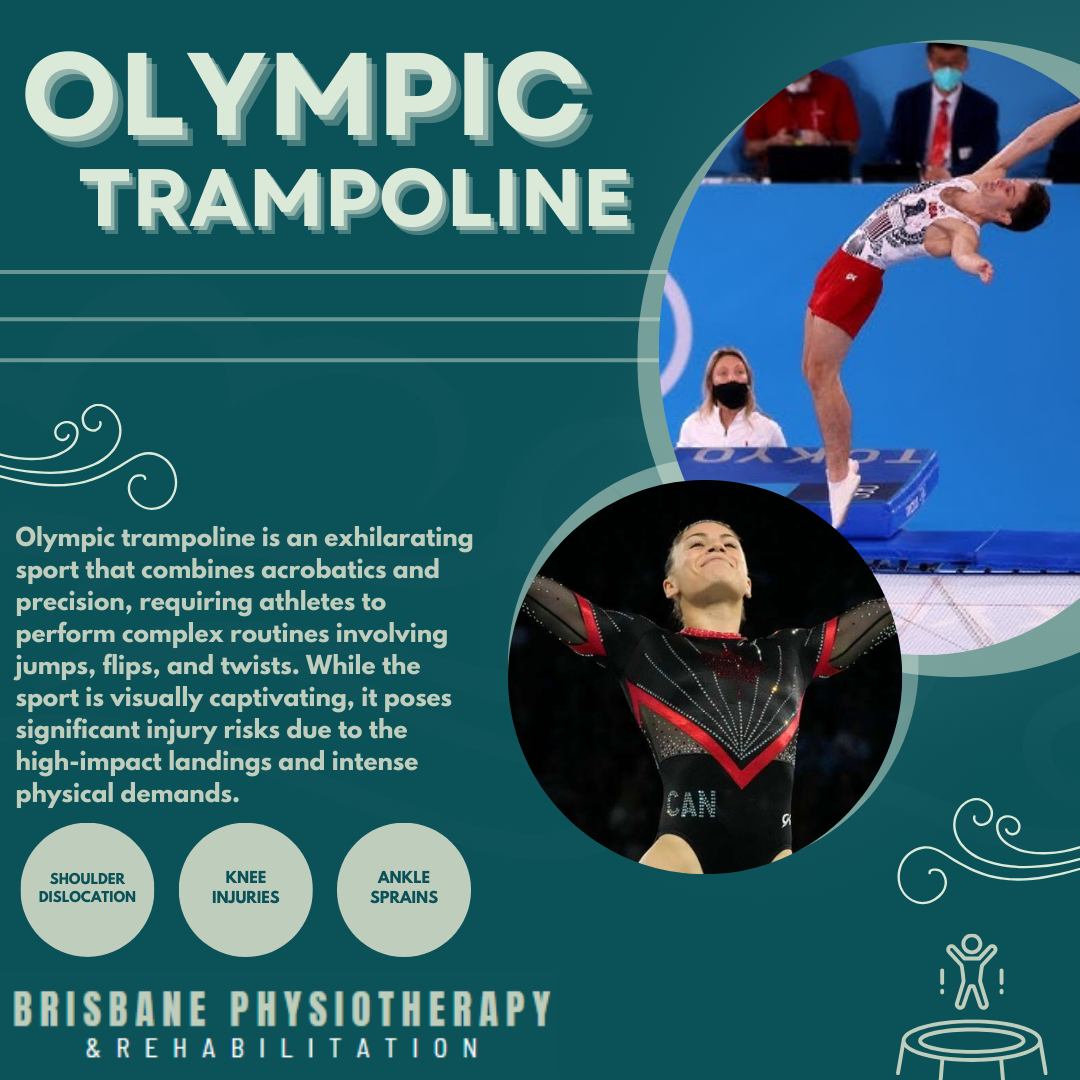Common Injuries in Trampoline
Trampoline is an exhilarating sport that combines acrobatics and precision, requiring athletes to perform complex routines involving jumps, flips, and twists. While the sport is visually captivating, it poses significant injury risks due to the high-impact landings and intense physical demands. Understanding the common injuries by body region is crucial for effective injury management and prevention in trampoline athletes.
Upper Limb Injuries
Shoulder Injuries: Trampoline athletes often experience shoulder injuries such as rotator cuff strains and shoulder dislocations. These injuries can result from the powerful arm movements needed to control spins and twists mid-air and from improper landings that put stress on the shoulder joints.
Elbow and Wrist Injuries: Elbow injuries, including lateral and medial epicondylitis (tennis and golfer's elbow), can occur due to the repetitive stress of maintaining arm positions during routines. Wrist injuries, such as fractures, sprains and TFCC tears, are common from the repetitive or unfortunate landings.
Lower Limb Injuries
Knee Injuries: Knee injuries are prevalent among trampoline athletes, with common issues including anterior cruciate ligament (ACL) tears and meniscus injuries. These injuries are often due to the high-impact landings and the twisting motions involved in complex aerial manoeuvres.
Ankle and Foot Injuries: Ankle sprains and Achilles tendinitis are frequent injuries, typically resulting from awkward landings or the repetitive stress of jumps and bounces. These injuries can be exacerbated by the unstable surface of the trampoline.
Back and Spinal Injuries
Back Pain and Muscle Strains: Back injuries and muscle strains, can occur due to the intense rotational forces and the need to maintain a rigid body posture during routines. These injuries are often the result of improper technique or overuse.
Other Injuries
Head and Neck Injuries: Accidental impacts and improper landings can lead to concussions, neck strains, and cervical spine injuries. These injuries highlight the high-risk nature of trampoline routines and the importance of proper technique and safety measures.
Physiotherapy Treatment
Physiotherapy is essential for managing trampoline-related injuries and facilitating recovery. Initial treatment focuses on reducing pain and inflammation through methods such as ice therapy, electrical stimulation, and rest. Manual therapy techniques, including joint mobilisation and soft tissue massage, help restore range of motion and flexibility. Customised rehabilitation programs aim to strengthen the muscles, improve stability, and prevent future injuries by addressing imbalances and weaknesses. Sport-specific rehabilitation protocols simulate trampoline movements to prepare athletes for a safe return to competition. Additionally, injury prevention strategies educate athletes on proper warm-up routines, biomechanics, and techniques to reduce the risk of injury during training and competition.
Conclusion
Trampoline athletes face unique injury risks due to the high-impact nature of their sport. Understanding these injuries by body region helps athletes and healthcare professionals implement targeted strategies for effective injury management, treatment, and prevention. Physiotherapy plays a vital role in supporting trampoline athletes' health and performance, ensuring they can continue to excel in their thrilling and demanding sport.

